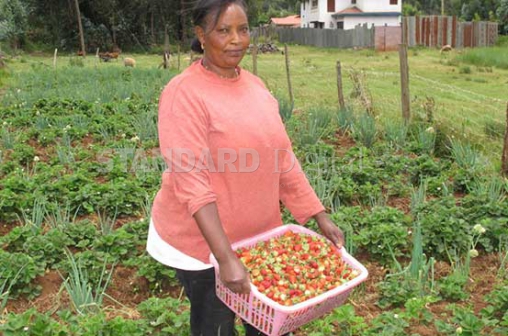×
The Standard e-Paper
Home To Bold Columnists

It is said that curiosity killed the cat. For Mary Gathoni, it pushed her into an unknown world of strawberry farming, which is now a successful agribusiness. Gathoni is today laughing all the way to the bank.
It all started in 2008 when Gathoni and her women’s group were trained in strawberry farming by officers from the Ministry of Agriculture.